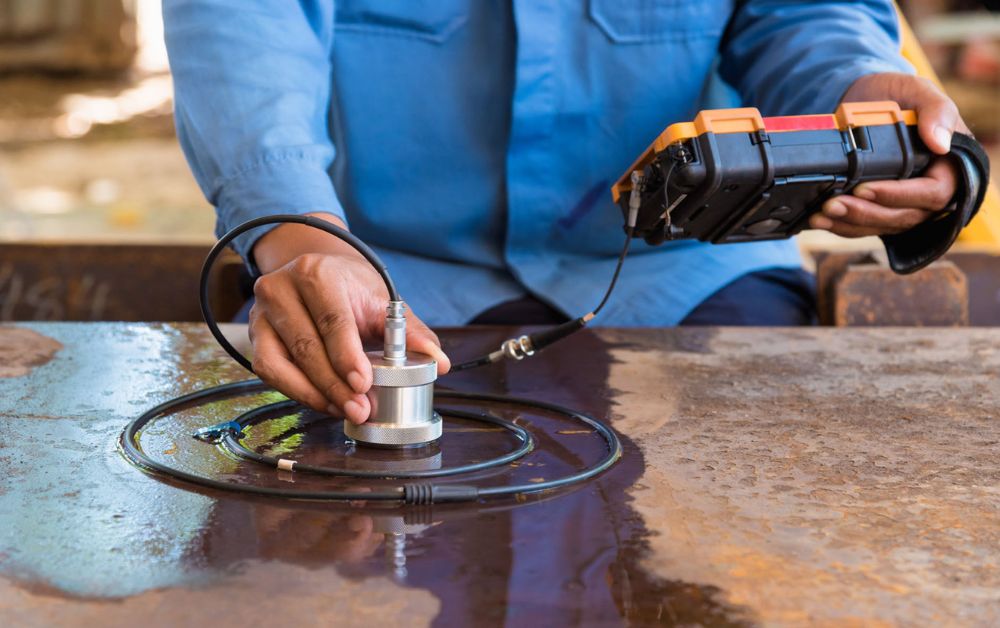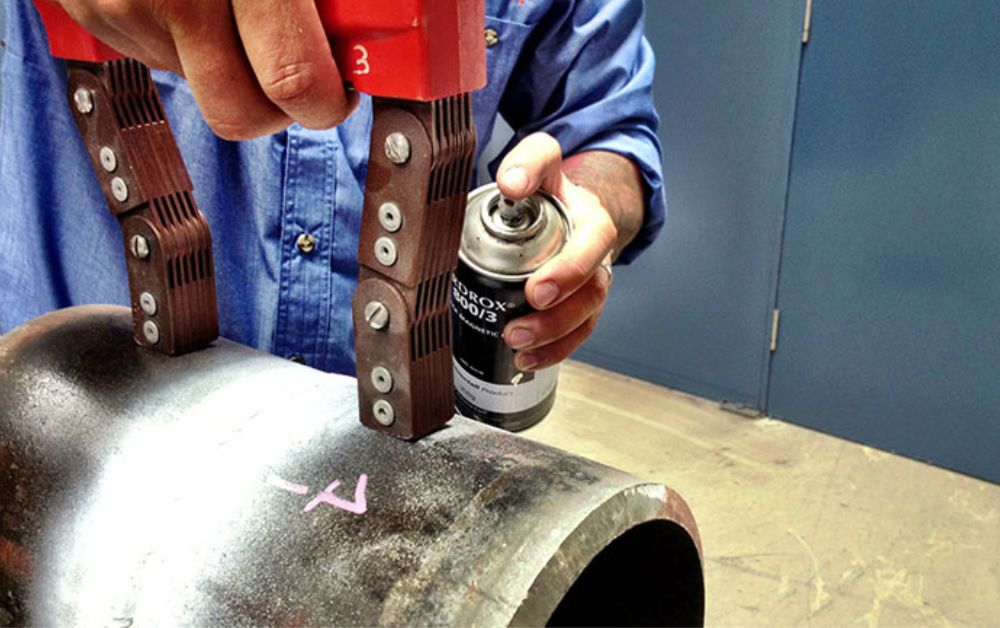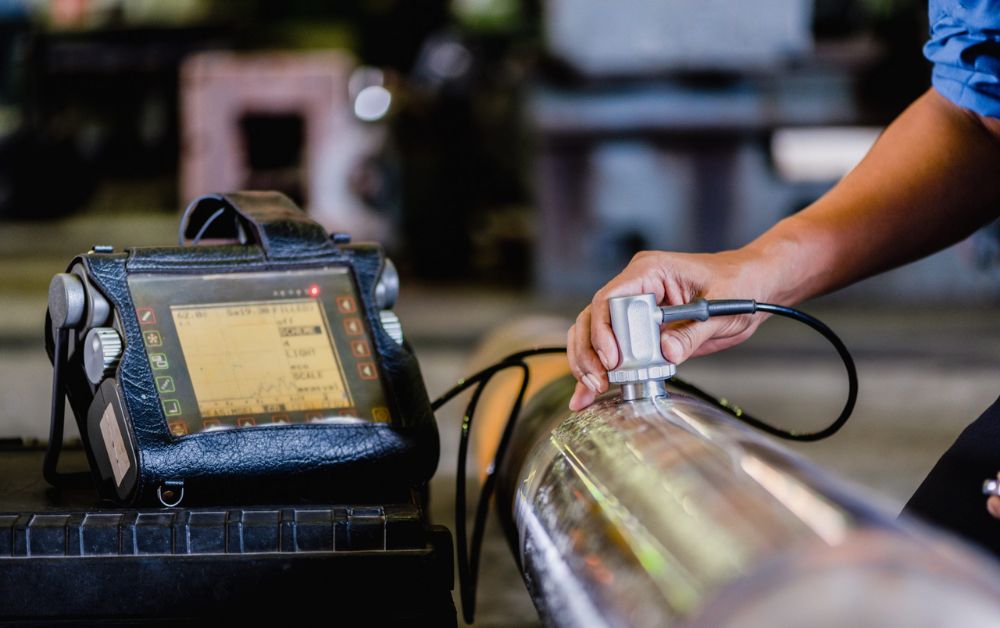Introduction: Why Quality Assurance Matters in Welding
In the world of industrial manufacturing, the structural integrity of welded joints is critical to the safety and performance of equipment, structures, and components. Whether it’s pipelines, pressure vessels, bridges, or aircraft parts, welding plays a vital role in fabricating these elements. But how do we ensure that a weld is free from defects without destroying the component itself?
This is where Non Destructive Testing (NDT) comes into play. NDT is a set of techniques used to evaluate the properties of materials, components, or systems without causing damage. It’s especially vital in the welding industry, where even a small defect in a weld can lead to catastrophic failure if left undetected.

1.What is Non Destructive Testing (NDT)?
Non Destructive Testing refers to a group of analysis techniques used in science and technology to assess the integrity of materials, components, or structures without altering or harming them. In welding, NDT ensures that the welds meet required standards without compromising the structure’s usability.
Some of the common NDT methods include:
- Visual Inspection (VT)
- Ultrasonic Testing (UT)
- Radiographic Testing (RT)
- Magnetic Particle Testing (MT)
- Dye Penetrant Testing (PT)
- Eddy Current Testing (ET)
Each method is suited to detecting specific types of defects such as cracks, voids, inclusions, or incomplete penetration.
2.Why NDT is Crucial in Welding Processes
1. Safety Assurance
The primary purpose of NDT in welding is to ensure safety. Many welded structures—such as bridges, aircraft, and pressure vessels—are critical components that, if failed, could cause harm to human life or the environment. By using NDT, defects can be detected and rectified early, ensuring the final product performs safely under expected conditions.
2. Cost Efficiency
Detecting flaws before they evolve into serious failures helps prevent costly repairs, replacements, or even lawsuits. Since NDT does not damage the component, it can be conducted at various stages of production, allowing for timely corrections without material waste.
3. Quality Control and Compliance
Welding projects are often subject to international codes and standards such as ASME, AWS, or ISO. NDT is essential for demonstrating compliance with these standards. Proper documentation of NDT inspections ensures that a project meets regulatory requirements, customer expectations, and quality benchmarks.
4. Enhanced Productivity
By identifying flaws early in the process, NDT helps prevent rework and delays. This leads to smoother project execution and improved overall productivity.
3.Common Types of NDT Used in Welding
1. Visual Testing (VT)
This is the simplest form of NDT and often the first step. It involves examining the weld with the naked eye or magnification tools to identify visible defects like cracks, porosity, or undercuts.
2. Ultrasonic Testing (UT)
UT uses high-frequency sound waves to detect internal flaws. It is highly sensitive and can identify minute defects deep within a weld without harming the material.
3. Radiographic Testing (RT)
RT uses X-rays or gamma rays to capture an image of the internal structure of a weld. It’s particularly effective in detecting porosity, inclusions, or lack of fusion.
4. Magnetic Particle Testing (MT)
This method is suitable for ferromagnetic materials. It reveals surface and near-surface defects by applying a magnetic field and dusting the surface with iron particles.
5. Dye Penetrant Testing (PT)
PT is used to detect surface-breaking defects. A dye is applied to the surface, which seeps into cracks. After cleaning the excess dye, a developer reveals the flaws by drawing out the penetrant.
4.Applications of NDT in Various Industries
NDT is indispensable in industries such as:
- Oil & Gas: Inspecting pipelines and storage tanks
- Construction: Evaluating welds in structural steel frameworks
- Aerospace: Ensuring the integrity of aircraft components
- Shipbuilding: Verifying welds on hulls and structural parts
- Manufacturing: Inspecting machinery, tools, and high-pressure equipment
In each of these sectors, welding quality directly influences operational efficiency and safety. NDT allows companies to deliver high-performance solutions while minimizing risk.
5.The Role of Skilled Inspectors and Advanced Technology
Effective NDT requires both qualified technicians and reliable equipment. Certified NDT professionals understand which methods to apply, how to interpret results, and when further action is needed. The integration of modern technologies such as digital radiography, phased array ultrasonics, and AI-based defect recognition has enhanced the accuracy and efficiency of inspections.
6.When Should NDT Be Performed?
NDT isn’t limited to just one stage of the welding process. It can be employed:
- Before welding (to check base materials and joints)
- During welding (to monitor weld quality in real time)
- After welding (to ensure final integrity and strength)
This multi-stage inspection approach reduces the chance of defects going unnoticed and improves the reliability of the final structure.

Conclusion: Why Raysun Techno Industries LLC is the Trusted Name in Welding Excellence
In the competitive and quality-driven landscape of industrial welding, Raysun Techno Industries LLC has emerged as a leader that understands the critical role of Non Destructive Testing in ensuring the safety, longevity, and efficiency of welded components. With a commitment to global standards, a skilled team of certified professionals, and cutting-edge inspection technologies, Raysun delivers welding solutions that go beyond expectations.
By integrating robust NDT practices into every project, Raysun Techno Industries LLC not only safeguards structural integrity but also reinforces client trust and industry reputation—making it a reliable partner for every precision welding need.

